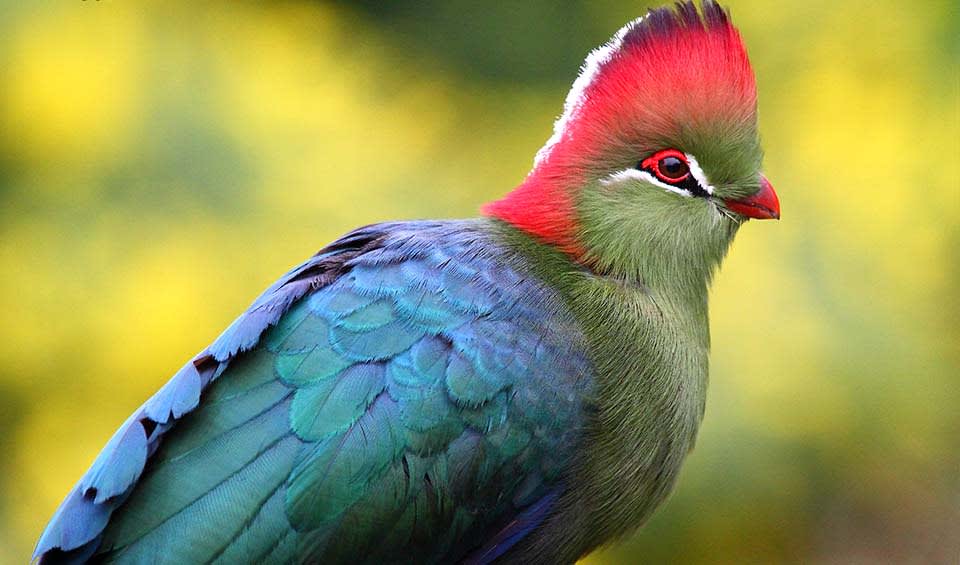A strikingly beautiful bird that brings the vivid hues of nature to life within its native habitat. These birds, medium in size, are a part of the Musophagidae family, more commonly known as the banana-eater family, although they do not typically eat bananas. The radiant colors that adorn their bodies are not just for show; they serve as camouflage among the verdant leaves of the trees where they reside.
Native to the forests and coastal woodlands of East Africa, particularly in countries like Tanzania and Kenya, Fischer’s Turaco prefers areas of dense foliage where they can forage and nest undisturbed. Their preferred habitat also provides them with the fruits and vegetation that make up their diet. The iridescent green color of their plumage, with shades ranging from bright emerald to deeper shades of green, plays a crucial role in their survival, blending seamlessly with the leaves and shadows of the forest canopy.
The bird’s striking features include a prominent crest of feathers on its head, which it can raise or lower. This crest, along with the crimson feathers around the face and the tip of the tail, is one of its most distinctive features. The red pigment, known as turacin, is unique to the turaco family and is not found in any other birds. Due to the pigment turacoverdin, the blue coloration on their wings is equally remarkable and becomes especially visible when the bird is in flight.
Fischer’s Turaco’s behavior is as intriguing as its appearance. These birds are quite social and often seen in small groups. They exhibit strong territorial instincts, often using their loud and varied calls to communicate with each other over considerable distances. These vocalizations, a complex array of deep booms, high-pitched whistles, and cackles, are a means of communication and a marker of the bird’s presence within the dense foliage.
Distribution
 Kenya
Kenya Somalia
Somalia Tanzania
TanzaniaAnything we've missed?
Help us improve this page by suggesting edits. Glory never dies!
Suggest an editGet to know me
Terrestrial / Aquatic
Altricial / Precocial
Polygamous / Monogamous
Dimorphic (size) / Monomorphic
Active: Diurnal / Nocturnal
Social behavior: Solitary / Pack / Herd
Diet: Carnivore / Herbivore / Omnivore / Piscivorous / Insectivore
Migratory: Yes / No
Domesticated: Yes / No
Dangerous: Yes / No




